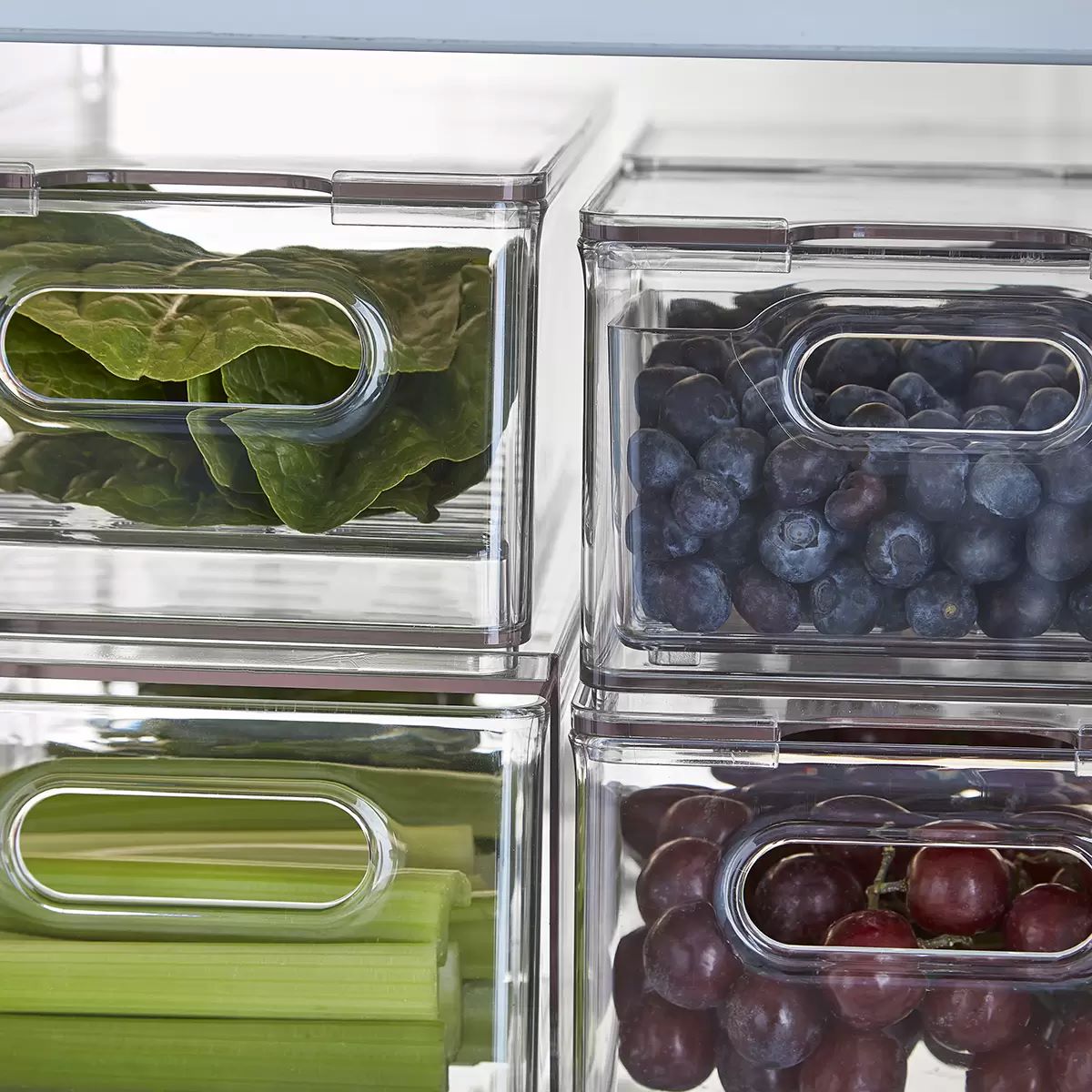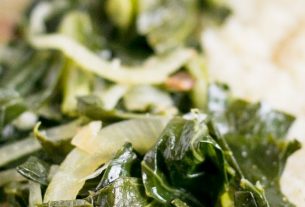Grapes, those tiny bursts of flavor, are a delightful addition to any meal or a refreshing snack.
But how often have you found yourself throwing out a moldy or shriveled bunch just days after purchase?
Proper storage is the key to preserving the sweet taste and juiciness of grapes for longer.
In this article, we will explore the best techniques to store grapes to ensure they stay firm, plump, and delicious.
So let’s dive in and unlock the secrets to grape storage that will have you enjoying every bite, without the worry of spoilage.
how to store grapes
To store grapes, start by checking that you are buying firm and plump grapes attached to the stem, avoiding moldy or shriveled ones.
A whitish coating called “bloom” is normal and helps protect the grapes.
For whole grapes, wash and dry them before placing them in a well-ventilated container in the crisper drawer of the refrigerator.
Avoid using airtight containers or plastic bags.
Whole grapes can last up to three weeks in the fridge.
If you cut the grapes, store them in an airtight container in the refrigerator for up to 48 hours.
Alternatively, you can freeze grapes by rinsing and drying them, spreading them out on a lined baking sheet, freezing them for a few hours or overnight, and then transferring them to a storage container.
Frozen grapes make a quick and tasty snack or dessert.
Key Points:
- Check that you are buying firm and plump grapes attached to the stem, avoiding moldy or shriveled ones
- A whitish coating called “bloom” is normal and helps protect the grapes
- Wash and dry whole grapes before placing them in a well-ventilated container in the crisper drawer of the refrigerator
- Avoid using airtight containers or plastic bags for storing whole grapes
- Whole grapes can last up to three weeks in the fridge
- If you cut the grapes, store them in an airtight container in the refrigerator for up to 48 hours
- Frozen grapes can be made by rinsing, drying, and freezing them on a lined baking sheet before transferring them to a storage container
- Frozen grapes make a quick and tasty snack or dessert.
how to store grapes – Watch Video
💡
Pro Tips:
1. Grapes should be stored unwashed to prevent the growth of mold and deterioration of their quality.
2. Placing grapes in a paper bag and storing them in the refrigerator can extend their shelf life by up to a week.
3. Freezing grapes not only preserves them, but also creates a delightful frozen treat. They make a delicious and healthy alternative to ice cream.
4. Grapes can be easily dried at home to make raisins. Simply arrange them on a baking sheet, leave them in a warm, dry place for a few days, and they will transform into tasty raisins.
5. To maintain grape freshness, avoid storing them near strong-smelling foods such as onions and garlic, as grapes can absorb odors easily and it may affect their taste.
Buying Tips: Firm And Plump Grapes Attached To The Stem
When it comes to buying grapes, it is essential to choose the right ones to ensure their freshness and longevity. The first thing to look for is firm and plump grapes attached to the stem. These grapes are a sign of quality, indicating that they are fresh and in good condition. The stem also plays a role in preserving the grapes, as it helps to maintain their integrity and keep them fresh for longer.
On the other hand, grapes that are moldy, watery, or shriveled at the stem should be avoided. These are indications of spoilage and may affect the quality and taste of the grapes. By carefully selecting your grapes, you can ensure that you bring home a bunch of fresh and delicious fruit.
Avoid Spoiled Grapes: Moldy, Watery, And Shriveled At The Stem
Spoiled grapes can be a disappointment, as they not only taste unpleasant but may also pose health risks. It is crucial to inspect the grapes before buying or consuming them. Grapes that are moldy, watery, or shriveled at the stem are signs of spoilage.
Moldy grapes can develop harmful bacteria that can lead to food poisoning and other health issues. Watery grapes may indicate excessive moisture, which can accelerate spoilage. Shriveled grapes generally signify dehydration and loss of freshness.
By avoiding grapes with these characteristics, you can enjoy the best quality grapes and reduce the risk of consuming spoiled fruit.
- Inspect grapes before buying or consuming them
- Avoid grapes that are moldy, watery, or shriveled
- Moldy grapes can lead to food poisoning
- Watery grapes indicate excessive moisture
- Shriveled grapes mean dehydration and loss of freshness.
The Protective Coating: Understanding The “Bloom” On Grapes
When inspecting grapes, it is important to recognize that the whitish coating on their surface, known as “bloom,” is a natural and beneficial feature. Bloom is not an indication of spoilage, but rather serves as a protective layer that helps to maintain the freshness and flavor of the grapes. It acts as a barrier against moisture loss, preventing the grapes from drying out and becoming less desirable.
It is worth emphasizing that the bloom is harmless and can be easily removed when desired. However, it is generally recommended to leave it intact until you are ready to consume or use the grapes. Removing the bloom prematurely may expose the grapes to moisture, ultimately hastening their spoilage. Therefore, when you come across the bloom on your grapes, you can be confident that it is there to keep them fresh and preserve their quality.
Proper Storage: Well-Ventilated Container In The Crisper Drawer
To extend the freshness of your grapes, proper storage is crucial. Follow these steps:
- Wash the grapes gently.
- Pat them dry.
- Place them in a well-ventilated container.
- Store the container in the crisper drawer of your refrigerator.
The crisper drawer helps maintain a slightly higher humidity level, preventing the grapes from drying out.
Avoid using airtight containers or plastic bags when storing grapes in the refrigerator. These containers can trap moisture, leading to mold growth and spoilage. Instead, consider these options:
- Use containers with ventilation holes.
- Keep the grapes in their original packaging, which often provides adequate ventilation.
By following these storage practices, you can significantly prolong the freshness of your grapes for up to three weeks.
Say No To Airtight Containers: Storing Whole Grapes
To store whole grapes and prevent spoilage, it is important to avoid airtight containers or plastic bags. These types of containers restrict airflow, which leads to excess moisture buildup and a higher chance of spoilage.
Instead, choose a well-ventilated container that allows for proper air circulation. Look for a container with ventilation holes or slits. This will allow the grapes to breathe and prevent the accumulation of excess moisture.
Alternatively, you can store the grapes in their original packaging. Many grape producers ensure that their packaging is adequately ventilated. Storing the grapes in their original packaging can help maintain their fresh flavor and texture for a longer period.
In summary:
- Avoid airtight containers or plastic bags.
- Choose a well-ventilated container that allows for proper air circulation.
- Look for a container with ventilation holes or slits.
- Consider storing the grapes in their original packaging.
Remember, proper storage is key to maintaining the quality of your grapes and preventing them from spoiling prematurely.
Storing Cut Grapes: Airtight Containers In The Fridge For 48 Hours
If you have leftover grapes or prefer to cut them before consuming, proper storage is crucial to maintain their freshness. Here are some tips for storing cut grapes:
- Place the cut grapes in an airtight container.
- Ensure the container is completely sealed to prevent air and moisture from entering.
- Store the container in the refrigerator.
- This will help preserve their flavor and prevent drying out.
By following these guidelines, you can enjoy your cut grapes for up to 48 hours, while maintaining their delicious taste and juiciness.
- Seal the container to prevent air and moisture entry.
- Store in the refrigerator.
“Properly stored cut grapes can be enjoyed for up to 48 hours, maintaining their taste and juiciness.”
Frozen Grapes: A Quick And Delicious Snack Or Dessert
Frozen grapes can be a perfect snack or dessert, especially when it’s hot outside. Not only does freezing grapes prolong their lifespan, but it also transforms their texture, giving them a sorbet-like consistency.
To freeze grapes, follow these simple steps:
- Rinse the grapes under cool water and gently pat them dry.
- Spread the grapes out on a lined baking sheet, making sure they don’t touch each other.
- Place the baking sheet in the freezer for a few hours or overnight.
Enjoy the refreshing and delightful experience of frozen grapes!
“A scoop of frozen grapes can be just as satisfying as a scoop of sorbet.”
Freezing Grapes: Rinse, Dry, And Spread On A Baking Sheet
Before freezing grapes, it is important to rinse them under cool water to remove any dirt or residue. After rinsing, pat them dry gently using a paper towel or a clean cloth. It is necessary to ensure the grapes are completely dry before freezing, as excess moisture can lead to freezer burn.
Once the grapes are dry, spread them out on a lined baking sheet, ensuring they are not touching each other. This allows for even freezing and prevents the grapes from sticking together. By following these steps, you can ensure that your frozen grapes retain their texture and taste.
Freeze Time: A Few Hours Or Overnight
After spreading the grapes on the baking sheet, place it in the freezer for a few hours or overnight. The grapes should be left to freeze for a few hours or overnight. The freezing time will depend on your freezer’s temperature and the desired texture of the frozen grapes.
It is important not to leave the grapes in the freezer for an excessive amount of time, as this can affect their quality. By monitoring the freezing time, you can ensure that the grapes reach the desired consistency and are ready to be enjoyed as a snack or used in various recipes.
Transfer And Store: From The Baking Sheet To A Storage Container
Once the grapes are frozen, it is time to transfer them from the baking sheet to a storage container. This step ensures that the grapes stay frozen and do not develop freezer burn. Transfer the grapes gently into airtight storage containers, making sure to remove any excess air to prevent the onset of freezer burn.
You can use resealable freezer bags or plastic containers specifically designed for freezer use. Label the containers with the date of freezing to keep track of their freshness. By properly transferring and storing the frozen grapes, you can enjoy their delightful taste and texture for months to come.
In conclusion, storing grapes properly is essential to maintain their freshness and extend their shelf life. By following these steps, including choosing firm and plump grapes, avoiding spoiled grapes, understanding the protective bloom, using well-ventilated containers, and freezing grapes correctly, you can enjoy fresh and delicious grapes for an extended period. So the next time you buy or have an abundance of grapes, use these storage techniques to ensure their quality and savor their taste.
💡
You may need to know these questions about how to store grapes
Should you store grapes off the stem?
Storing grapes off the stem can actually be beneficial in certain situations. While leaving grapes on the stems helps prolong their shelf life by minimizing exposure to oxygen, removing them from the stem can accelerate ripening and enhance convenience. When grapes are not on the stem, they tend to ripen faster as air can reach them from all sides. Consequently, if you prefer softer and sweeter grapes, storing them off the stem might be a suitable option for you. Additionally, removing the grapes from the stem can make it easier to access and consume them, especially for those who prefer to grab a handful as a snack or add them to recipes without any stems getting in the way.
Do grapes last longer in the fridge or on the counter?
Grapes will last longer in the fridge rather than on the counter. When stored in the refrigerator, grapes can stay fresh for up to three weeks, which is significantly longer compared to counter storage. It’s important to avoid leaving them on the counter, as this speeds up their spoilage process. However, freezing grapes can also be a great option, as they can be enjoyed for up to a year after being frozen.
Should grapes be kept in the fridge?
Grapes should be stored in the fridge to maintain their freshness and quality. While it is fine to keep them at room temperature if they will be eaten on the day of purchase, for longer storage, it is recommended to place them in a cold place. Storing the grapes in the fridge, ideally in the crisper drawer with high humidity, helps to slow down the ripening process and keeps them crisp and juicy for up to a week. However, it is essential to keep them separate from other fruits and vegetables that require lower humidity to prevent spoilage.
Should grapes be washed before refrigerating?
It is best to store grapes unwashed before refrigerating them. Washing grapes before storing them can lead to faster decay due to the extra moisture. To maintain their freshness for longer, it is advisable to only wash the grapes when you are ready to consume them, after removing them from the original bag or punnet.
Reference source
https://www.realsimple.com/how-to-store-grapes-7105160
https://thecrosslegacy.com/grapes/
https://www.southernliving.com/how-to-store-grapes-7497828
https://www.masterclass.com/articles/how-to-store-grapes



